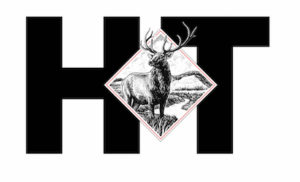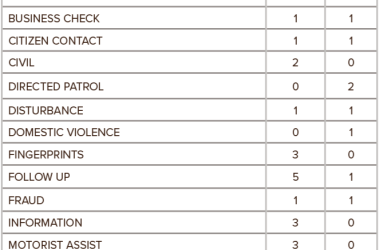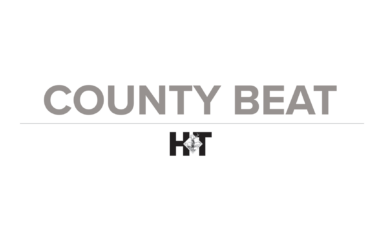I read Patti Williams’ article on feral horses with interest. Having served on the Rio Blanco County Planning Commission and BLM’s Northwest Colorado Resource Advisory Board I have learned to listen to both sides before making a decision. So, it was with disappointment that I realized the author had not consulted any ranchers, range specialists or wildlife biologists before writing the article. She has dispelled the listed myths by political terminology, not actual fact.
Wild horses are part of the reason my family is still in the ranching business. During the Depression a cow was worth $10, a horse was worth $30, wolves and lions were worth $50. Going into World War II and through the Korean War horse mane and tail hair was worth $30 by itself because the Army used it for bomb sights. My grandfather would take care of his cattle then run wild horses or hunt wolves. They financed the ranch by selling the horses they caught. If they only caught a few they would throw them down and pull their manes and tails and turn them loose. In the early 1930s my grandfather joined with Farey Carpenter and 20-plus other ranchers and convinced Congressman Ed Taylor to write the Taylor Grazing Act. My grandfather served on the first advisory board to determine the qualifications necessary to have a grazing permit and to set each entity’s allotted animal units. People who ran bands of horses were given permits for them but wild horses were looked on as wildlife and not addressed at that time.
When I was young there was no longer a market for this type of horse so people only chased them for fun. This was sort of range management in that we would chase them all out of Texas Creek and they would be gone for a couple of days or a couple of weeks and the grass would get a chance to grow. At this same time there were a lot of meat hunters running the Bookcliffs. We tried to keep them off of our ranch because they were the same kind of people who are out there shooting deer in the winter and only taking the heads. They would also shoot our ranch horses and would steal calves if they couldn’t find any horses. This was the activity the Wild Horse and Burro Act was originally meant to stop.
On Dec. 15, 1971, the Wild and Free Roaming Horse and Burro Act was passed and every rancher in the West discovered that wild horses had received greater protection than the Endangered Species Act would afford to raptors but that people like us were considered part of the bad guys and the horse was not a perceived, but an actual threat to our livelihood. The Vernal District BLM proposed taking our permit to make a wild horse refuge. It did not happen because the Act does not allow BLM to place horses in areas where they did not exist when the law was passed. When we bought the Evacuation Creek permit we lost our horse permit because there were wild horses there, even though they are trespass horses and not in the West Douglas Horse area.
Two weeks ago I went to check our mares and yearling colts. I found a wild stud with them. One of the yearling stallions had been killed and another had been kicked and had a very sore eye. Since I have a BLM permit all I could do was gather my horses off my private land and move them. Anything else could have cost my permit. This is something that has to change. If a wolf was in the pasture with the mares I could use any non-lethal means to get him to leave or if I saw him killing a colt I could shoot him. Or in the case just described I could have the government trapper come and get him.
When the wild horse act was passed the BLM was required to inventory the areas where horses were found on Dec. 15, 1971. That action formed the basis for the Horse Management Areas (HMA) now in existence. At the same time they were to determine Appropriate Management Levels (AML).
All HMAs’ have an AML range, when the horses exceed the maximum level the BLM gathers them and tries to reduce the number down to the minimum number allowed, so they only have to have a gather about every four years instead of gathering and culling them every year like a rancher does to keep his numbers in check. In 1971 the estimated wild horse and burro population was approximately 17,000. The west wide AML was set at 26,578. According to the Inspector General of the Department of the Interior in October 2010, the total on the range was 38,365. That number will be much higher after two foal crops even with some gathers since then.
As of October, 2010 BLM has 37,800 in holding facilities. The Act directs the BLM to sell or euthanize excess horses “without limitation,” a rule BLM does not have the political will to adhere to. The BLM is constantly being accused of inhumane treatment of horses. In 2010 they gathered 11,039 head and 95 died or were euthanized due to chronic disease or lameness. If the BLM’s 20 percent growth estimate is correct, and all gathers were stopped now, the horse population on the range will be 238,000 in the year 2020. Of course, if 10 percent growth was correct then it would only be 100,000. I believe that if all gathers would stop that the increase would settle in at 25 percent annually.
In 1975, the BLM was charged with writing a management plan for every horse area in the west. They were to determine if they would continue with the horse plan in place, which they did for Piceance Creek; remove all domestic livestock and have only horses, which they did for the Little Bookcliffs; or remove all horses, which is the plan for West Douglas. However, West Douglas has been under litigation since the 1980s.
The original act authorized the BLM to destroy incapacitated horses and to capture and remove them to preserve and maintain the condition of the public lands. The act was amended by the Federal Land Management Policy Act of 1976 to allow BLM to use helicopters and other motorized vehicles to catch horses. It was amended again by the Public Rangelands Act of 1978. At that time BLM was required to call any area that had a horse plan that was not an HMA a Horse Area (HA). This is a problem for BLM in that the horse advocates consider a Horse Area to be the same as a Horse Management Area, and has been an incentive for continued litigation.
In fiscal year 2010 the wild horse program cost the taxpayers $66.1 million and horse adoption rates dropped from 6,644 in 2004 to 2,960 in 2010. Compounding the problem is the high numbers of domestic horses that are being turned out with the feral ones. This has happened because there is no market for old horses with the slaughter plants closed down.
The buckskin mare, with foal, and the sorrel mare are turned out domestic horses. The little brown guys are West Douglas wild horses.
The horse advocates want to take us back to the 1930s. They want to stop all gathers and take out all fences, including the right-of-way fence on Colorado Highway 139, and let the horses run free.
In 2009 the Northwest Resource Advisory Council passed a resolution asking the BLM to donate the horses in the holding corrals to third world countries for work animals or human consumption. We need to do that: gather the total horse numbers on the range down to the west wide AML, clean out the holding corrals and keep it there in order to do the best we can for the horses, the land and the people.
On Dec. 13, 2010, the Inspector General of the Department of the Interior issued a report to Bob Abbey, Director of the BLM on wild horses. This report was also sent to Congress. The inspection came about “in response to current allegations of mismanagement and abuse surrounding the BLM’s Wild Horse and Burro program, we conducted the inspection to determine if wild horse and burro gathers are necessary and justified, and if wild horses and burros are being mistreated.”
They stated the following: “Our inspection confirmed that wild horse and burro gathers are necessary because BLM lands cannot sustain the growing population of wild horses and burros. The growing population of these animals must be addressed to achieve and maintain a thriving natural and ecological balance of the authorized uses of the land, thus gathers are necessary and justified actions. Further, we did not observe any inhumane treatment of wild horses and burros.”
This is the situation with wild horses if you are a Federal lands rancher. It is not the whole story. The oil and gas industry is limited as to when they can drill a well if wild horses are present. The only time wild horses have an economic benefit to Rio Blanco County is when a gather is ongoing and the crews are staying here.
So, let us stay clearheaded and let the BLM do their job.
Jon D. Hill
President, Cripple
Cowboy Cow Outfit, Inc.





















